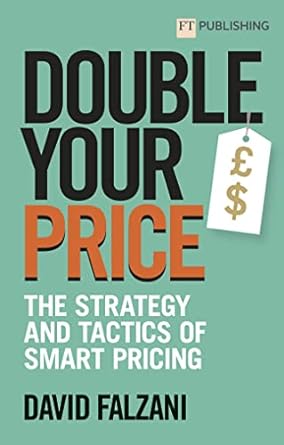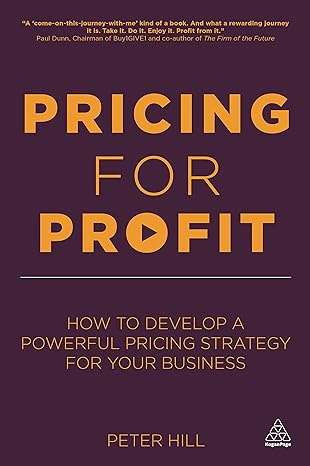Pricing Medical Devices: How Do You Price a Life?
 PriceBeam
·
2 minute read
PriceBeam
·
2 minute read
Sudden cardiac death is a sudden, unexpected death caused by loss of heart function. Sudden cardiac death is the largest cause of natural death in the United States, causing about 325,000 adult deaths in the United States each year. It occurs when the electrical system to the heart malfunctions and suddenly becomes very irregular.
Most sudden cardiac deaths are caused by abnormal heart rhythms called arrhythmias. The most common life-threatening arrhythmia is ventricular fibrillation, which is an erratic, disorganized firing of impulses from the ventricles. When this occurs, the heart is unable to pump blood and death will occur within minutes, if left untreated
Sudden cardiac death is responsible for half of all heart disease deaths
So, yesterday I met this guy who's company invented a portable defibrillator. Not much larger than a hard case for a pair of glasses, it split into two and does everything a defibrillator need to do fully automatically; monitor the heart and provide electrical shocks when necessary to get the heart pumping as it should again. He told me that some 70% of these ventricular fibrillation cases happen in the home and that when it happens, the chance of survival goes down with some 10% for every minute the condition continues, but in reality after four or so minutes, the damage to the brain from oxygen loss becomes irreversible. His aim is to have this device, his portable defibrillator in every home, potentially saving hundreds of thousands of lives. So how do you price such a device? How do you price a life?
The device is protected by seven issued and 22 pending patents so, in reality, the company has created an opportunity to be the sole provider to the market. They created their own monopoly.
But the question remains; how do you price a life? The company could leverage their de facto monopoly position and price the device very high, selling relatively few units with high margins. But the gentleman I spoke to was committed to price the device as low as possible, providing the benefits to as many people as possible.
If we consider these two options; pricing the device "high" would allow the company significant margins that they could use to refine the product further, making it even smaller maybe, even easier to use and to spend considerable amounts on marketing to create awareness of the product. But a "high" price would be in conflict with the company's goal to save as many lives as possible. It would be out of reach for many people, and only those of considerable financial means would be able to afford it. The flip side is to price the device "low," but that also comes with problems. Since the price of a product is the most powerful marketing message of quality and benefit, if priced too low, sales volume will not be as high as it could be simply because potential customers will doubt the device will work. It will also leave the company with thin margins making it harder to create appropriate awareness of the product and to refine and develop versions of the product. So "too high" and "too low" price means that there is a just one right price for the product. A price where the maximum number of potential customers say they can afford the product, and where the minimum number of potential customers say the price is so low they would doubt the quality and benefits it provides. Only at that price will the company's stated goals be met; to save as many lives as possible.
The single price that is the price the market is willing to pay for a life.
Most sudden cardiac deaths are caused by abnormal heart rhythms called arrhythmias. The most common life-threatening arrhythmia is ventricular fibrillation, which is an erratic, disorganized firing of impulses from the ventricles. When this occurs, the heart is unable to pump blood and death will occur within minutes, if left untreated
Sudden cardiac death is responsible for half of all heart disease deaths
So, yesterday I met this guy who's company invented a portable defibrillator. Not much larger than a hard case for a pair of glasses, it split into two and does everything a defibrillator need to do fully automatically; monitor the heart and provide electrical shocks when necessary to get the heart pumping as it should again. He told me that some 70% of these ventricular fibrillation cases happen in the home and that when it happens, the chance of survival goes down with some 10% for every minute the condition continues, but in reality after four or so minutes, the damage to the brain from oxygen loss becomes irreversible. His aim is to have this device, his portable defibrillator in every home, potentially saving hundreds of thousands of lives. So how do you price such a device? How do you price a life?
The device is protected by seven issued and 22 pending patents so, in reality, the company has created an opportunity to be the sole provider to the market. They created their own monopoly.
But the question remains; how do you price a life? The company could leverage their de facto monopoly position and price the device very high, selling relatively few units with high margins. But the gentleman I spoke to was committed to price the device as low as possible, providing the benefits to as many people as possible.
If we consider these two options; pricing the device "high" would allow the company significant margins that they could use to refine the product further, making it even smaller maybe, even easier to use and to spend considerable amounts on marketing to create awareness of the product. But a "high" price would be in conflict with the company's goal to save as many lives as possible. It would be out of reach for many people, and only those of considerable financial means would be able to afford it. The flip side is to price the device "low," but that also comes with problems. Since the price of a product is the most powerful marketing message of quality and benefit, if priced too low, sales volume will not be as high as it could be simply because potential customers will doubt the device will work. It will also leave the company with thin margins making it harder to create appropriate awareness of the product and to refine and develop versions of the product. So "too high" and "too low" price means that there is a just one right price for the product. A price where the maximum number of potential customers say they can afford the product, and where the minimum number of potential customers say the price is so low they would doubt the quality and benefits it provides. Only at that price will the company's stated goals be met; to save as many lives as possible.
The single price that is the price the market is willing to pay for a life.
.png?width=400&height=100&name=PBLogoTransparent%20(1).png)



